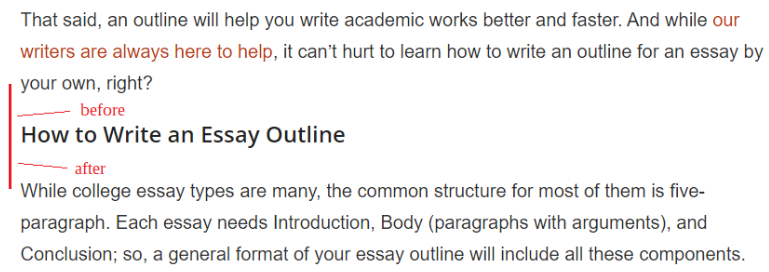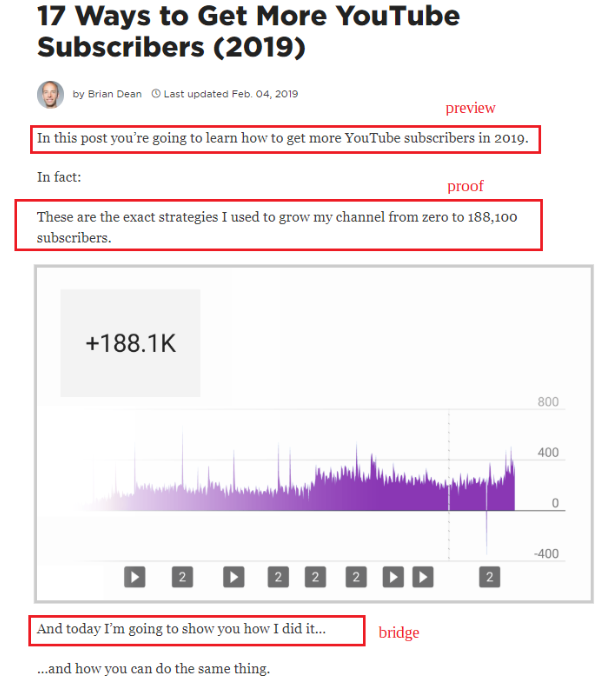2020 is here, and most of the SEO specialists have finally come to terms with the fact that search engines are getting smarter every day. Behavioural factors and search intent call the shots, but SEO processes go far beyond building links with product-defining or promotional keywords.
SEO content develops at a rapid-fire pace. One can't merely write a 500+ word text with a couple of keywords to target the audience. To win Google SERPs in 2020, we need to craft content for people but make it look high-quality for search engines as well.
How?
Let's get straight to the point.
What is "High-Quality" Content for Google in 2020?
While the Domain Authority (DA) used to be about links, now it covers much more factors. In 2019, Google Quality Rater Guidelines focused on the reputation of a website and understanding its content purpose.
In other words, Google wants to rank "reliable sources". For a website to become so, it needs to generate expert content optimised for semantic search and search intent.
Three factors of high-quality content in 2020:
- It's about E-A-T.
E-A-T is for Expertise, Authoritativeness, and Trustworthiness of your content, and it seems that Google intends making it a key ranking signal next year. It wants to feature content written by experts; it wants your website to be transparent (with a detailed "About Us" page, contacts, privacy policy, references, and author bylines on every blog post); and it wants you to prove you're an expert.
Everyone can call themselves professionals, but do others agree with that? Getting cited or listed on trusted websites, judged as a reputable resource by expert opinions — all that works on your reputation for higher rankings.

- It matches search intent.
If you still think that exact-matching keyword optimisation is the only thing you need to rank high, think twice. Google moved away from it, focusing more on the query context: it analyzes the search intent of a user to deliver the results.
So, it looks like your content won't rank in 2020 if it doesn't match search intent.
- It's unique.
Both Google and your target audience need content that solves problems. The more research, concept visuals, and expert comments you put to it to help users, the better.
- Back it up with relevant and up-to-date data: surveys, industry studies, insights, actionable case studies, etc.
- Add concept visuals (brand images, original infographics, graphs, videos, etc.): make it easy for others to embed the visuals into their content and link back to you.
- Encourage comments to your blog posts: it's the engagement signal for Google, telling you that you have an active community.

Keep in mind all the above when planning and writing SEO content in 2020.
How to Write SEO Texts to Meet Google's Requirements
With so many SEO copywriting tricks to consider for top-notch content that ranks, here are nine most significant to remember.
1) Identify search intent and do semantic research
Your every keyword has an intent: to find, to buy, to compare, or just to read about something. And while the intention may be in the keyword itself (like "buy pizza in Chicago," for example), it's not always that obvious.
Let's say your keyword is "persuasive writing."

Someone searching for it could want to know what it is. Or, they might want to learn the types of writing or actionable techniques to try to persuade others. But according to Google, most people want to know how to craft a persuasive essay when searching for "persuasive writing."

For your content to rank higher, make sure it matches the search intent. The search results will help you find it out. Then, try semantic research tools to cluster that query into related concepts so you could cover them in content while writing.
2) Find and group so-called hidden keywords that can help your content rank higher
You know them:
- Niche keywords, also known as LSI. It's lexical items surrounding your exact keywords that help Google understand your topic. Related searches and tools such as LSI Graph will help you identify them.
- Exclusive keywords: your brand name that helps Google associate it with the niche and user-generated keywords. (Check Q&A websites to identify the words they use to ask questions, and then include them into the content.)
- Long-tail keywords: as you know, 40% of all search traffic comes from them. Look for long-tail keywords in related searches, forums, or tools like Soovle or KeywordTool.io.
- Influencers' names. Mention and cite opinion leaders in your niche to attract targeted traffic, grow your brand's trust, and influence your overall rankings.

- Vertical keywords. It's keywords from closely related niches but with clear connections to your audience.
3) Optimise content for featured snippets
You know that featured snippets aka Position Zero of Google steal a lot of clicks from the #1 in SERP. The question is, how to get your content to appear there?
The answer: format it accordingly.
First, specify a keyword you want to rank for in a snippet. It's a keyword you already rank in the top 10, but others rank for it in a snippet.
Then, add a content block to your page. Design it for a snippet: write a definition, a step-by-step list, a table, etc. For example, this article of mine has appeared in a Google snippet after I've added a content block there:

4) Optimise content for voice search
Given that 41% of users perform at least one voice search every day, you might want to optimise content accordingly so they would find you. And yet, far from all content at your blog needs such an optimisation.
- Consider the content that ranks in the top three search results.
- Include a question there, and answer it. (As you understand, most of the voice searches are question-based.)
5) Embed video content and optimise it for SEO
According to HubSpot, 43% of people want to see more video content. But when giving it to them, remember to optimise it so it would boost your search results.
- Organise your video content into sections, with a title for each so it could appear in video snippets.
- Remember about video description and tags so Google could understand what's in there.
- Provide transcripts for your videos.
- Embed videos into your text content.
And, if the game is worth the candle, do your best to launch and grow a YouTube channel.
6) Avoid usability blunders
When formatting content for publishing, align it left, make subheads easy to see (use a different font size or colour, make them bold and short), and avoid wrong spacing before and after subheads.
Wrong:

Right:

The spacing before a subhead here is wider than the spacing after it, helping readers understand what paragraph it belongs.
Also, avoid complex text structures. (H1-H2-H3 is enough, and there's no need to expand it to H4-H5-H6-etc.) Keep paragraphs short, use lists and images to make texts look appealing, and avoid large text fields.
7) Use title tag modifiers
They'll help you get more traffic from long-tail keywords.
Modifiers are the words making your content titles more specific. For example, "Link Building: The Definite Guide" won't rank as high as "How to Build Links With No Budget," or "10 Best Tips on Link Building for SEO in 2020."
So, add one or two modifiers to your titles:
- How to
- Best
- Top
- Easy
- Simple
- Tips
- Guide
- Fast
- Checklist
- Case Study
8) Organise the introduction like a boss
This tip comes from Brian Dean, an SEO expert whom we all know. All while your title helps users decide if they want to click the link, your introduction lets them see if they're going to continue reading the content.
The introduction formulas such as APP and PPB can help you decrease bounce rate but increase dwell time, positively influence your overall rankings.
So, here they go.
The APP approach in the introduction: Agree, Promise, Preview. It's also known as Align (the problem), Present (your content as a solution), Proof (explain why readers should trust you).

The PPB approach: Preview, Proof, Bridge.

9) Organise so it would become more viral
All these factors influence the search results of your content. The more engaging it is, the more long-term SEO benefits it gets.
- NLP copywriting tricks in headlines and subheads (numbers, power verbs, persuasive writing techniques, etc.)
- Relevant and high-quality images
- Short sentences and paragraphs, easy to scan
- Practical tips in the content, based on research and related data
- Emotional writing tactics
- Influencers mentions
- A clear call to action
Also, remember to update your old content regularly. Focus on the assets that still could be relevant and helpful for your SEO endeavours and consider topic clusters for more traffic and conversion.
Conclusion
The effective content will give you all the tools to influence search engine rankings and keep the target audience engaged. The question is, are you ready to accept the need for focusing on the content quality rather than the number of backlinks in 2020?
Yes?
Then, it's your key takeaways to consider:
- Consider E-A-T when planning your content strategies.
- Make sure your content matches the search intent of your keywords.
- Optimise it for different types of featured snippets and voice search.
- Format your texts so they'll get more chances to go viral: use title tag modifiers, hooks in introductions, emotional writing tactics, high-quality images, short URLs, short sentences and paragraphs, etc.
Analyse your website regularly to see what else you can do with its content for more traffic and conversion.








